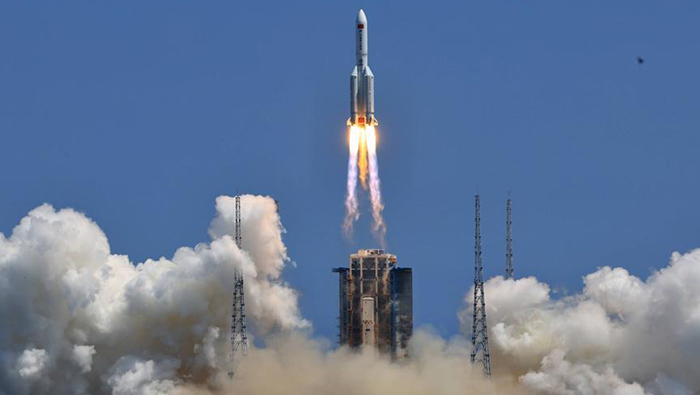
Hainan: In the latest step towards an ambitious space program, China has launched the second of three modules needed to complete its new space station.
On Sunday, live feed on state broadcaster CCTV showed the unmanned craft — named Wentian — being propelled by the country's most powerful rocket — the Long March 5B — from the Wenchang launch centre on China's southern island of Hainan at 2:22 p.m. (0822 CET).
Shortly after the launch, CCTV reported it to be "a complete success."
The 23-ton laboratory module is almost 18 meters long and has three sleeping areas, along with a space for scientific experiments.
Beijing began constructing its space station called Tiangong ( "heavenly palace") in April 2021, with the launch of the Tianhe module.
Tianhe, the central module, would be the main living quarters, in the first of 11 crewed and uncrewed missions in the undertaking.
What's next?
In a challenging maneuver, Wentian would now have to dock with the existing module in space.
Experts say that the operation would require the use of a robotic arm and a number of high-precision manipulations.
The newly launched module will also serve as a backup platform to control the space station in case of a failure.
Tiangong is expected to have a lifespan of at least 10 years and Beijing is looking to make it fully operational by the end of the year.
The third and final module is slated to dock in October.
China's "space dream” has been given a major push under President Xi Jinping.
The completion of the new space station is also set to cap the president's 10 years as the leader of the ruling Communist Party.